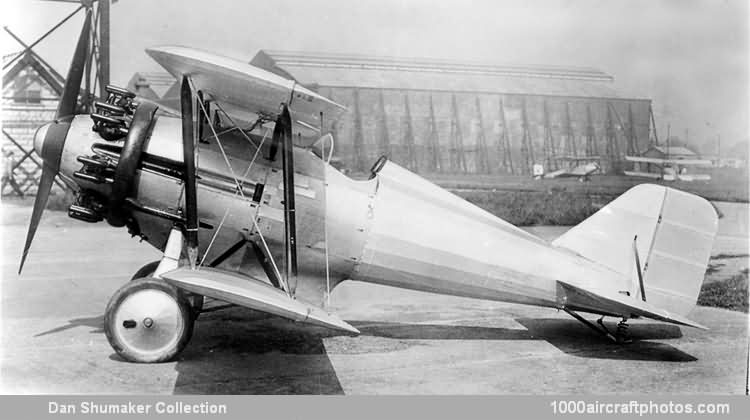Appearing in the early summer of 1928, the all-wood F.2 Lincock Mk.I carried its finely-shaped plywood-monocoque fuselage suspended mid-way between the staggered single-bay wings. Mounted in the nose and faired-well into its lines was the 235 hp Lynx IV engine. The Lincock Mk.I was registered G-EBVO, and armed with a pair of synchronized Vickers guns. Flown by Squadron Leader J. Noakes, it took part in the 1928 King's Cup Race at an average speed of 115.32 mph (185.59 kmh).
At the Olympia Aero Show of 1929, Blackburn displayed the F.2A Lincock Mk.II, registered G-AALH, a revised version of all-metal construction with the fuselage faired into the lower wings and with a redesigned landing gear incorporating a split axle. A geared version of the Lynx, with Fairey metal propeller, supplanted the direct-drive type and was carried by the nose mounting, which formed one of the three detachable portions of the fuselage-the two other parts being the center unit and the rear fuselage.
It was intended to show the Mk.II at the 1930 Hendon Air Display in the New Types Park but, owing to damage to the machine, its place was taken at the show by the original Mk.I version. The Mk.II was quite diminutive, with the same span of 22 ft 6 in (6.86 m) as the Mk.I and an increased length of 19 ft 6 in (5.94 m), compared with the Mk.Is 18 ft 1 in (5.51 m). Top speed was 150 mph (241 kmh) against 168 mph (270 kmh) for the Mk.I.
The Mk.II was developed still further into the F.2D Lincock Mk.III. First flown in 1930 registered as G-ABFK, this version reached 164 mph (264 kmh). It incorporated a transverse axle in its landing gear and could be powered with the Lynx IVC as an alternative to the Lynx Major. An additional four Mk.IIIs were built: two were shipped to China and two to Japan.
Although the three marks of Lincock possessed excellent handling qualities, as part of the general design basis of the light- fighter, the low power used limited the top speed, compared with the conventional types of fighter, to such an extent that there was no place to be found for it in an air force.
However, Piaggio of Italy produced a two-seat version for training purposes, designated P.11. The sole example built, s/n MM152, underwent testing by the Italian AF on May 31, 1931."
Mk.III data:
Span: 22 ft 6 in (6.86 m)
Length: 16 ft 6 in (5.94 m)
Height: 7 ft 4 in (2.23 m)
Wing area: 170 sq.ft (15.79 sq.m)
Weight empty: 1,326 lb (601 kg)
Loaded weight: 2,082 lb (944 kg)
Max speed: 164 mph (264 kmh)
Climb: 1,660 ft (506 m)/min
Range: 380 mls (611 km)
